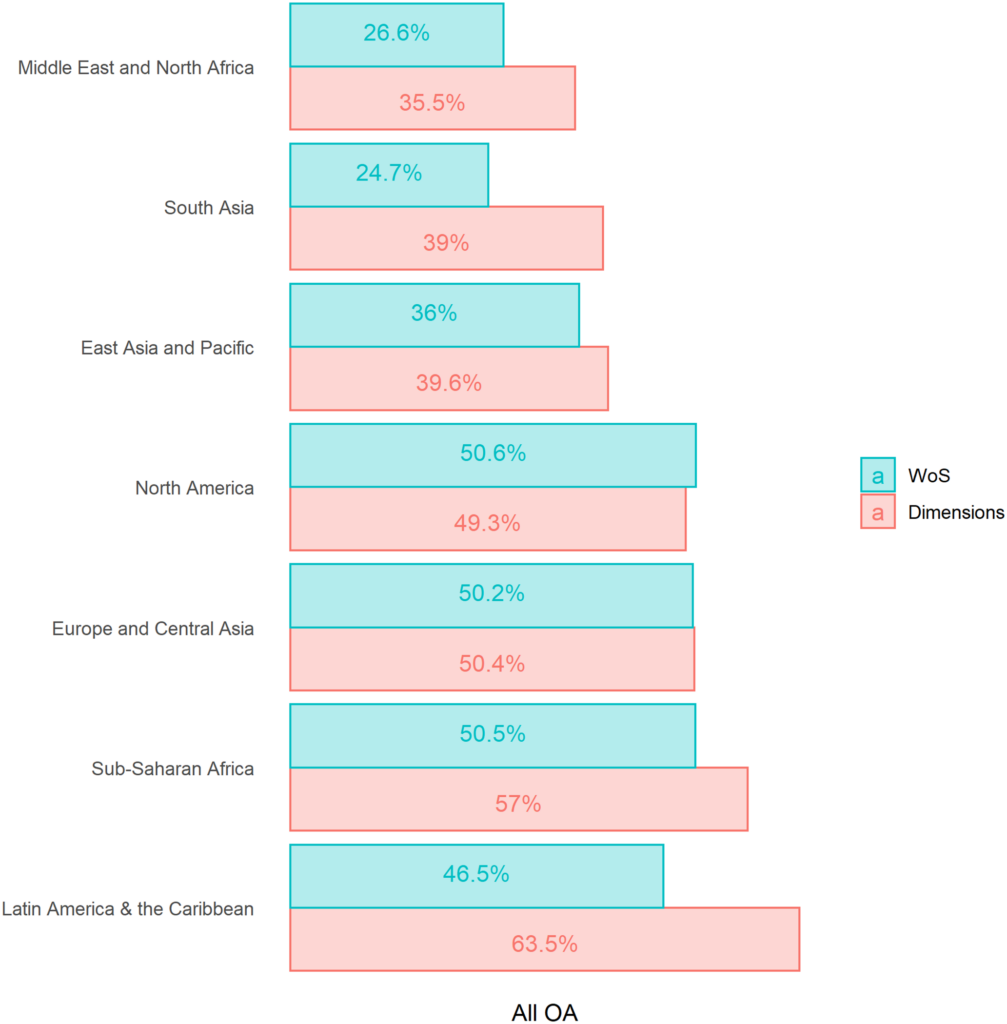“Dimensions remains—by far—the largest and broadest indexer of scientific documents.” —Dr Isabel Basson, Postdoctoral Fellow, Université de Montréal.
A new, independent comparison of Dimensions and Web of Science (WoS) has added further evidence to Dimensions being the world’s leading database of research information, including open access (OA) publications, in addition to grants, patents, datasets and clinical trials as a linked dataset.
In their paper The effect of data sources on the measurement of open access: A comparison of Dimensions and the Web of Science, published recently in the journal PLOS ONE, Dr Isabel Basson and colleagues have provided a detailed analysis of the two major bibliometric databases.
The authors write that with a growing number of open access mandates, “the accurate measurement of OA publishing is an important policy issue”.
The study, which was a collaboration between researchers at Université de Montréal, Stellenbosch University and the Georgia Institute of Technology, has found that Dimensions indexed almost 2.7 million more open access publications compared with WoS during the same time period.
“Over the 2015 to 2019 period, WoS indexed a total of 8,053,050 publications for which affiliation data is available. Dimensions indexed 10,743,016 such publications,” the authors write.
Dimensions also indexes more publications from a wider diversity of the world’s regions. “Strong differences can be seen when examining according to regions,” they write.

“For developed regions (Europe & Central Asia, North America), the percentage of OA publications is similar in both WoS and Dimensions. For all the other regions—which correspond to less developed parts of the world—, the percentage of OA publications in Dimensions are significantly higher… especially for South Asia (+57.9%), Latin Americas and the Caribbean (+36.6%), the Middle East and North Africa (+33.5%) and, to a lesser extent, Sub-Saharan Africa (+12.4%).”
The paper details that these proportions also differ substantially when considering different types of OA publications.
“Just as OA aims to provide visibility and access to research publications beyond toll-access journals, Dimensions provides a lens to investigate a broader number of publications, as opposed to only those that are considered to be the most relevant or core by Western-centric data sources such as WoS or Scopus.”
Dr Basson and colleagues have highlighted some potential limitations with Dimensions, including “a larger percentage of articles with missing metadata”, which is “particularly an issue for affiliation(s)” resolution.
However, the authors write: “Ultimately, given that Dimensions indexes journals published by the many platforms developed in the South—AJOL (Africa), AmeliCA (Latin America), and SciELO (Brazil)—it has the potential to be a more suitable platform for a more inclusive measurement of OA uptake, especially of publications by authors from outside North America, Europe, and Central Asia.”
Commenting on these findings, Dimensions CEO Dr Christian Herzog says:
“This article is a great testament that we have achieved one of our key objectives with Dimensions: we wanted to create a true ‘database’ rather than a selective set of publications, to broaden the view beyond well-trodden paths.
“Dimensions does not just focus on specific parts of the research ecosystem but enables us to look at the entire ecosystem, and to do so in detail.
“To read an independent analysis stating that Dimensions is a ‘more suitable platform for a more inclusive measurement of OA uptake’, particularly from authors right across the world, made me especially happy.
“We will not let up in working towards increasing the coverage of research activities in areas outside of North America, Europe, and Central Asia – not only in publications, but also in the number of grants and datasets.”
Read the full analysis in PLOS One or talk to our team about how Dimensions can support your research.
Sign up for news and updates from Dimensions
